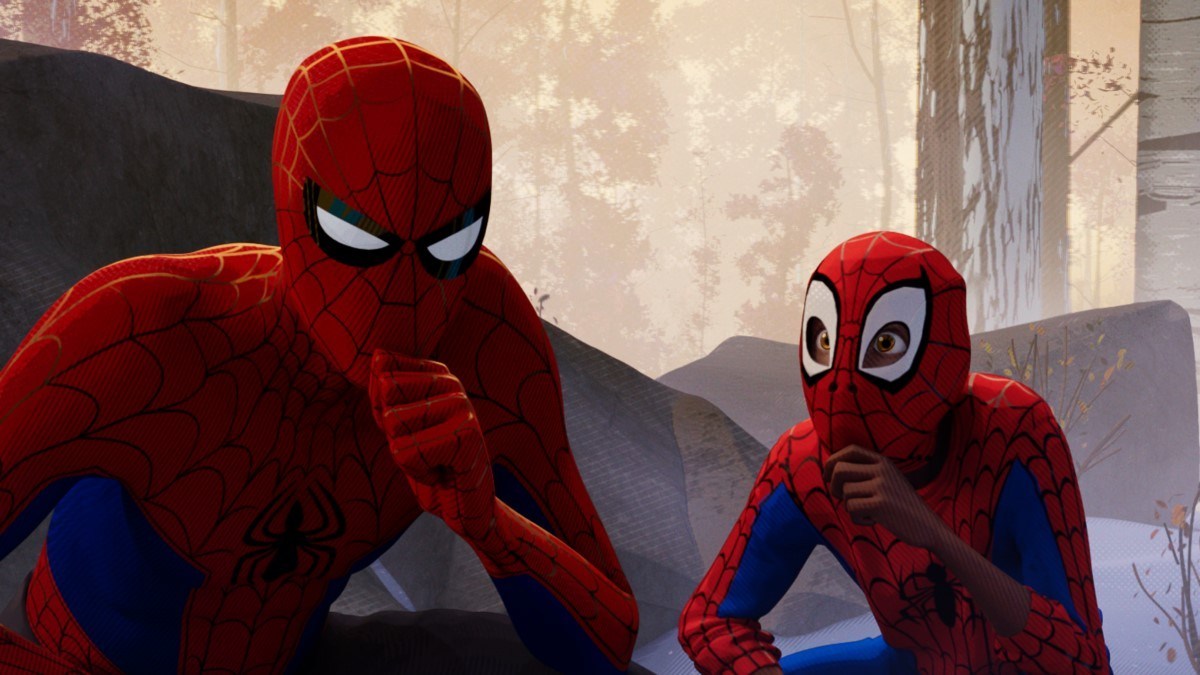This is a spoiler filled commentary meant for those who have seen the film or don’t mind spoilers.
Let’s get this out of the way right at the start. The Galadriel/Gandalf touch the hair thing worked. In fact, all of the touching between the two of them worked very well. I especially liked the contrast between the manicured and perfect hands of the “Lady of Light” and the scarred, calloused, dirty hands of the suffering servant Gandalf. So to all the members of the “Peter Jackson is Infallible” fan club and the entire nation of Middle Ear… I mean New Zealand, who last January decided that I was nothing but a horse’s derriere, mea cul…
Did I mention why I think it worked? That whole scene between Gandalf and Galadriel worked because, from my point of view, The Hobbit: An Unexpected Journey is a far better film than any of The Lord of the Rings films. I know this is a contrarian opinion, so let me explain.
As I said a year ago, my major critique of Peter Jackson, Fran Walsh, and Philippa Boyen’s adaptation of The Lord of the Rings comes from their monolithic insistence that self-doubt was the only way to add the necessary character arcs to make Tolkien’s characters translate to the screen. I disagree with this point of view, and I think that decision undermined so much of what Tolkien had to say about the choices available to human beings when faced with seemingly insurmountable challenges. I worried that the scene between Galadriel and Gandalf was a sign that they were going to add self-doubt to Gandalf’s character as well. He was one of the few who avoided the plague of angst in the Lord of the Rings.
The Hobbit: An Unexpected Journey is a better film because the writers allow many characters to pursue differing character arcs. Thorin has no self-doubt whatsoever, and that will be his undoing. Bilbo starts the film with a certain measure of self-doubt but learns quickly that he is more than he thinks he can be. Gandalf has a wholly different character arc which revolves around a growing sense of place and purpose in this world. In some sense, this is the beginning of Gandalf’s “coming of age” story, which only comes to fruition in The Lord of the Rings. Perhaps my favorite transformation is that of Elrond from the standoffish, mean, and aloof father in Lord of the Rings to the generous and even gracious elf of The Hobbit. Without even a hint of anger, he puts up with Thorin and Co., even when they purposely try to rile him. In fact, he looks amused — wonderful! (This is an elf who would willingly sunder himself for all eternity from his child for the sake of her love for a human man. The angry father of The Lord of the Rings had to be forced by the fact that she was dying anyway.) This new Elrond will make the contrast between him and the haughty elf King Thranduil all the more clear. In The Hobbit: An Unexpected Journey characters are not caricatures; they’re individuals, and this refreshing change allowed me to dance lightly over the film’s other flaws.
The Galadriel/Gandalf touching thing works because it doesn’t come from any self-doubt on Gandalf’s part. Instead, Galadriel’s touch is the caring touch of a fellow leader, who understands both the power and burden Gandalf carries. Well done, Peter Jackson and company! I cannot wait for Gandalf and Galadriel to fight the Necromancer at Dol Gulder. It’s gonna be awesome!
So, if the characterization is so much better in The Hobbit, why is the film getting such lukewarm reviews from the critics? One reason is that Peter Jackson still doesn’t understand the economic principle of diminishing returns. An epic fantasy film can and should strain the credulity of its physics — occasionally and with subtlety. However, Peter Jackson pushes his audience’s suspension of disbelief to the breaking point several more times than he should in The Hobbit. The CG physics look more like Angry Birds than real life. Apparently, Thorin and company all have bodies made of rubber. The next time I watch the film, I want to try to count how many times one of them should have died. From the silly riding around on the stone giant thing, to the fall which would have killed Bilbo, I found myself continuously having to reengage my suspension of disbelief after Jackson poked it in the eye. No one, not even Thorin Oakenshield, could take a full speed mace blow to the jaw without at least bloodying his face and spitting out a couple of teeth. Most likely the victim of such a blow would have a broken jaw or, at the worst, lose his head.
The funny thing is, after three films, I expected nothing less. To me these just felt like the foibles of an old friend, and I think the critics would have greeted them that way as well if it were not for the last confrontation with Azog which was just wholly unnecessary — as was the whole Azog plot in the first place. The confrontation served little purpose other than to stall the pacing of the film with yet another battle. I think it was this scene which did in many critics. While I am inclined to overlook it, it was the only scene which I felt truly diminished the work. It was just too bad that it came right at the end.
The only other foreboding I do have is that with so much CG eye-candy in the first film, where will we go in the last film with The Battle of the Five Armies? More CG doesn’t equal greater pleasure. We will just have to wait and see what Peter Jackson and Weta can pull off, but I am afraid it will lack a sense of awe and wonder because there has been so much bombast already.
But I will wait with less trepidation now than last January. If Peter Jackson and the other writers have created the same diversity of characters in the second two films, they should be fine. If they can figure out how not to trod so heavily on the audience’s suspension of disbelief, they may just find themselves raking in little golden statues. The Hobbit: An Unexpected Journey is a great film, better than any of The Lord of the Rings.





